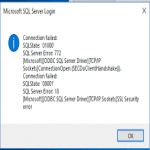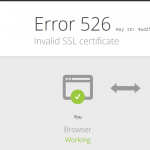As a Linux administrator, you often have to work with files, folders, symlinks, etc. And sometimes you need to know more information about individual elements in a path for example file type, owner, and so on. This is where the namei commandcomes to play.
Here at Ibmi Media, we shall look into how to use the namei command in Linux.
What is the syntax of the namei command ?
It's syntax is given below:
$ namei [options] pathname...For example, For example, if we have a file named test1.txt:
$ namei test/test1.txtThen from the output, you will see:
- f: the path name.
- d: directory.
- -: the file name.
Example of using the namei command
1. Align to the left margin (using -v option):
$ namei -v test/test1.txt2. Show owner and group (using -o option):
$ namei -o test/test1.txtIn our case, the folder and file are both owned by ubuntu.
3. Show long list (using -l option):
$ namei -l test/test1.txtWith this option, it will show more privileges of the owner.
If you only want to show the privileges of the owner, let’s use the -m option:
$ namei -m test/test1.txt[Need help in fixing Linux system issues ? We can help you. ]
Conclusion
This article covers how to use the namei command in Linux.
The namei command in Linux follows a pathname until a terminal point is found. Following is its syntax:
$ namei [options] pathname...And here's what the man page says about this tool:
- namei :interprets its arguments as pathnames to any type of Unix file (symlinks, files, directories, and so forth). namei then follows each pathname until an endpoint is found (a file, a directory, a device node, etc). If it finds a symbolic link, it shows the link, and starts following it, indenting the output to show the context.
- This program is useful for finding "too many levels of symbolic links" problems.
This article covers how to use the namei command in Linux.
The namei command in Linux follows a pathname until a terminal point is found. Following is its syntax:
$ namei [options] pathname...And here's what the man page says about this tool:
- namei :interprets its arguments as pathnames to any type of Unix file (symlinks, files, directories, and so forth). namei then follows each pathname until an endpoint is found (a file, a directory, a device node, etc). If it finds a symbolic link, it shows the link, and starts following it, indenting the output to show the context.
- This program is useful for finding "too many levels of symbolic links" problems.











